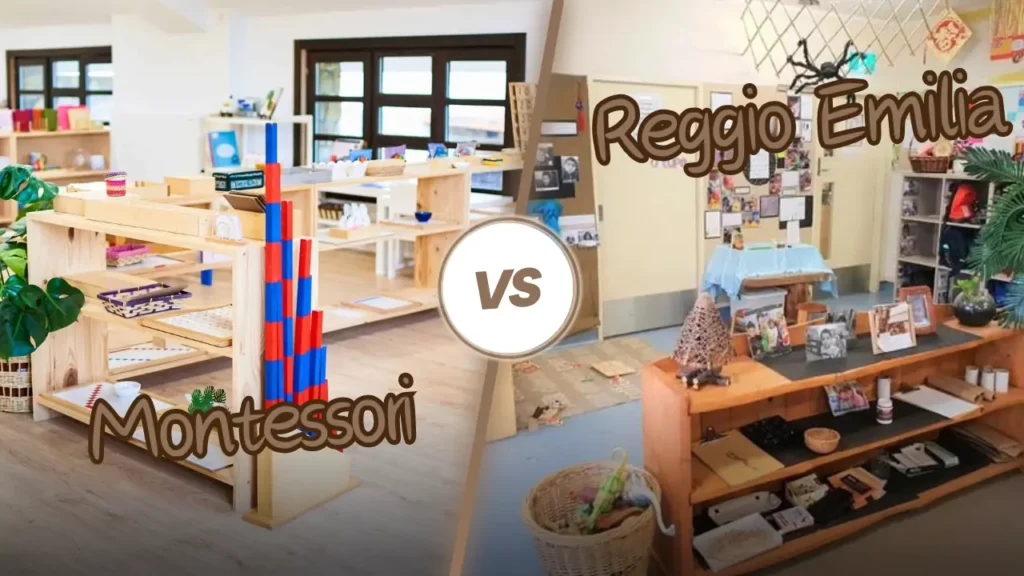If you are a parent exploring different educational methods for your child, you may have come across the names Reggio Emilia vs Montessori. While both the Reggio Emilia vs Montessori methods are highly regarded, they do have distinct differences that set them apart.
Both Reggio Emilia vs Montessori are child-centered approaches, but their underlying principles and methods differ. Reggio Emilia emphasizes the importance of collaboration and creativity, and believes that children construct knowledge through social interaction. Montessori, on the other hand, focuses on individualized learning, allowing children to explore and discover at their own pace using specially designed materials.
In this article, we’ll explore the key differences between Reggio Emilia vs Montessori, and understanding the differences between these approaches can help you align with the style of teaching that best suits your child’s needs. Whether you value Reggio Emilia’s emphasis on social collaboration and creativity or prefer Montessori’s personalized learning and self-discovery, this article will provide you with the insights necessary to make an informed decision.
History of Montessori vs Reggio Emilia
The Montessori method and the Reggio Emilia approach both have rich histories rooted in a profound belief in the potential of children. Developed in the early 20th century by Dr. Maria Montessori in Italy, the Montessori method has been adopted worldwide, influencing countless educational systems with its child-centered approach.
History of Montessori
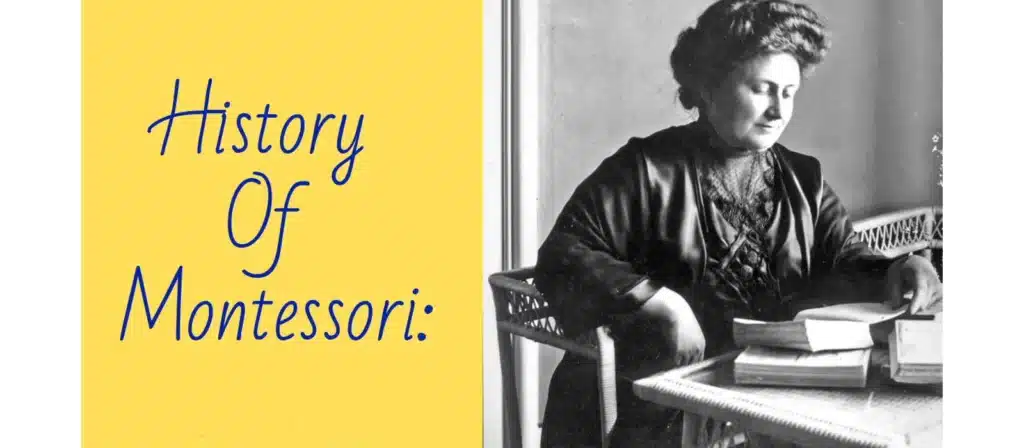
The Montessori method’s origins can be traced back to 1907 when Dr. Maria Montessori opened her first classroom, Casa dei Bambini, or Children’s House, in Rome. Montessori, the first female physician in Italy, applied her observations of children’s learning processes to develop a range of educational materials and a philosophy that respected children’s natural development. Her approach quickly spread globally, becoming a transformative force in early childhood education. Montessori’s dedication to observing children and creating an environment that supported their natural growth led to the development of a pedagogy that continues to be revered and implemented worldwide.
History of Reggio Emilia
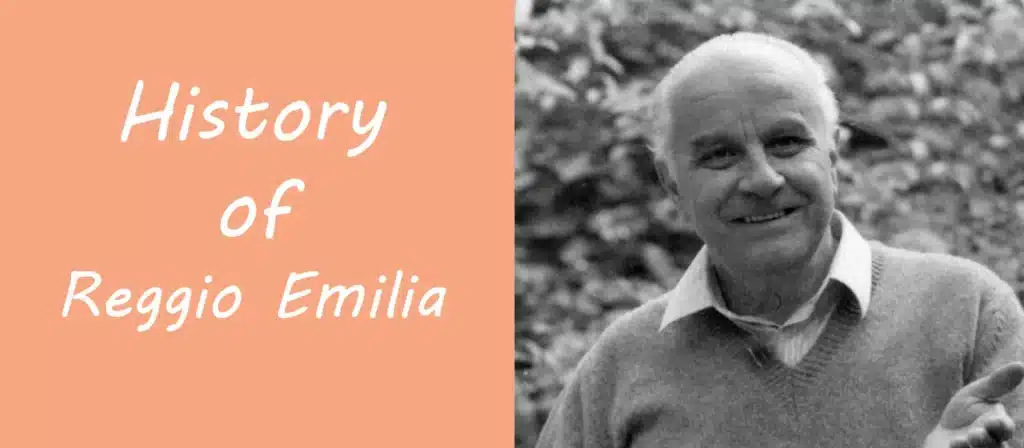
The Reggio Emilia approach was developed in the context of post-war Italy, as parents and educators in the town of Reggio Emilia sought to create a new form of education that reflected their hopes for a better future. Loris Malaguzzi, inspired by the educational philosophies of John Dewey and Jean Piaget, among others, emphasized the importance of community, environment, and the arts in learning. The approach is named after the town, reflecting its deep roots in the local community and culture. It has since evolved into a highly respected educational philosophy, known for its emphasis on creativity, collaboration, and exploration.
Educational Philosophy of Montessori vs Reggio Emilia
When comparing the educational philosophies of Montessori and Reggio Emilia, it’s clear that both prioritize the child as the central figure in their own learning. However, they differ significantly in how they view the role of the teacher, the environment, and the curriculum.
Montessori Philosophy
At the core of the Montessori philosophy is the belief in the child’s natural desire to learn and grow. Dr. Maria Montessori designed specific materials and environments to nurture this desire, facilitating learning through sensory experiences and practical activities. Children are encouraged to explore independently within a structured environment, developing concentration, coordination, and a sense of order. The Montessori approach fosters a love of learning, independence, and respect for oneself and others, laying a foundation for lifelong learning and personal development.
Reggio Emilia Philosophy
Reggio Emilia philosophy views the child as a protagonist, collaborator, and communicator who is rich in potential. It emphasizes the importance of a self-guided curriculum that emerges from the children’s interests, in collaboration with teachers and parents. The environment, or the “third teacher,” is carefully designed to be inviting and to provoke curiosity. Documentation of children’s work is crucial, as it serves as a reflection of the child’s learning process, making learning visible to the child, the educators, and the parents. The role of the teacher in Reggio Emilia is more collaborative, as they research, learn, and discover alongside the children.
Principles of Montessori vs Reggio Emilia
Exploring the core principles of the Montessori and Reggio Emilia approaches reveals distinct philosophies guiding their educational practices. Both prioritize the development of the whole child but approach this goal differently, reflecting their unique views on learning, the role of the teacher, and the importance of the environment.
What are the principles of Montessori teaching method?
The Montessori method is based on several key principles:
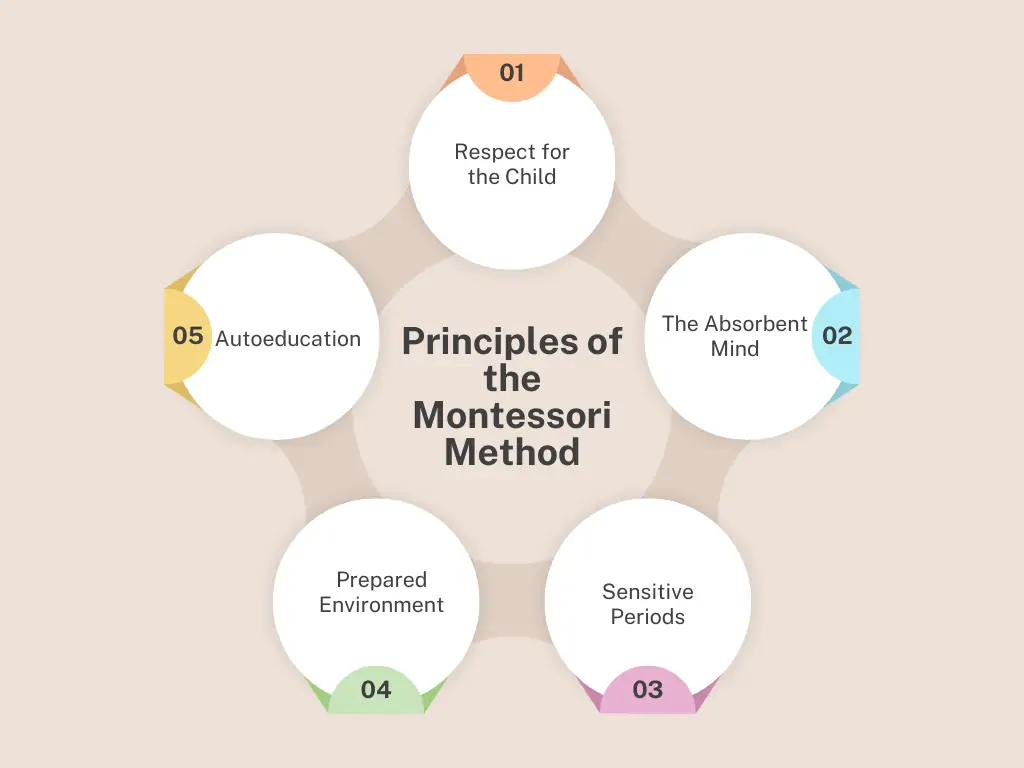
- Respect for the Child: Montessori education is child-centered, emphasizing respect for each child’s individuality and the belief that children are naturally eager for knowledge and capable of initiating learning in a supportive, thoughtfully prepared learning environment.
- The Absorbent Mind: Montessori posits that children have a natural ability to absorb knowledge from their environment, especially suited to learning at an early age.
- Sensitive Periods: According to Montessori, children go through specific periods of sensitivity, where they are more inclined to certain behaviors or skills. Recognizing and supporting these periods is crucial for optimal development.
- Prepared Environment: The classroom is designed to meet the needs and interests of the children within it, equipped with materials that encourage exploration, discovery, and the practice of skills at their own pace.
- Autoeducation: Montessori encourages self-directed learning, allowing children to engage with materials of their own choosing and to learn through their own activities.
What are the principles of the Reggio Emilia approach?
The Reggio Emilia approach also holds several core principles:
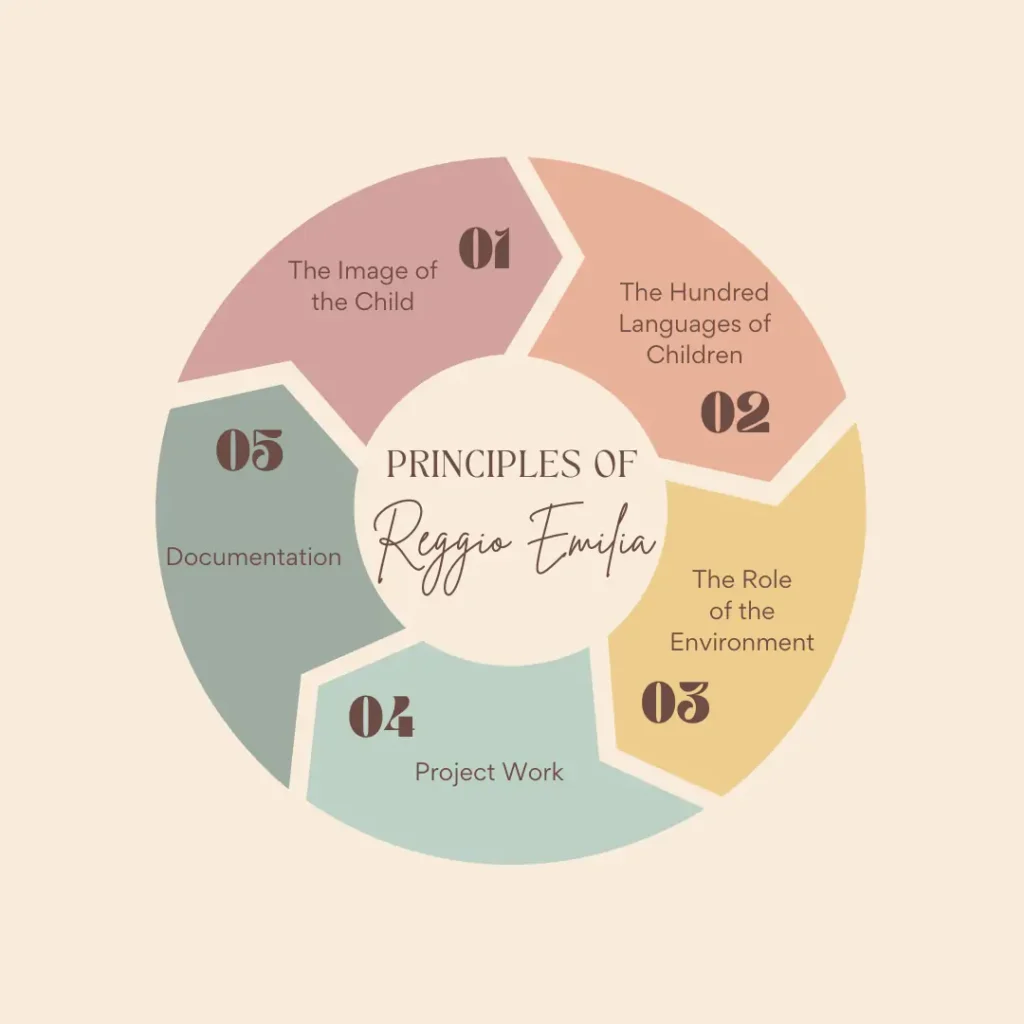
- The Image of the Child: Reggio Emilia views children as competent, curious, full of potential, and capable of constructing their own learning.
- The Hundred Languages of Children: This principle emphasizes that children use many different ways to express their thoughts and creativity, not just through words but through art, movement, play, and more.
- The Role of the Environment: Often referred to as the “third teacher,” the environment in a Reggio Emilia setting is carefully designed to be inviting, reflective of the children’s interests, and conducive to exploration and learning.
- Project Work: Learning is often project-based, stemming from the children’s interests, encouraging exploration, discovery, and collaboration.
- Documentation: Teachers document children’s work and the learning process, which acts as an important tool for reflection and planning.
What does a Montessori classroom look like?
A Montessori classroom is characterized by several distinct features:
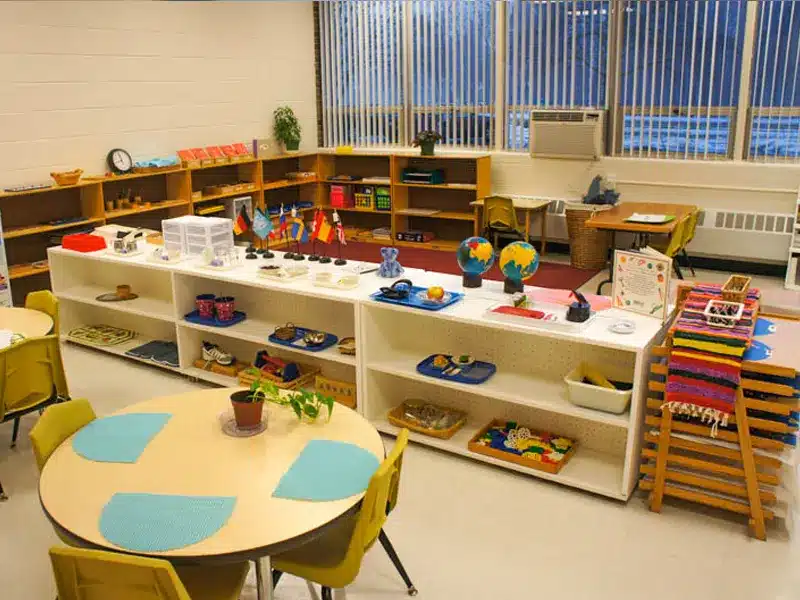
- Order and Beauty: Everything in the classroom has its place, designed to be accessible to children and to foster independence.
- Learning Materials: Specific Montessori materials help with self-correction, teaching one skill or concept at a time.
- Mixed Age Groups: Montessori classrooms often combine children of varying ages, fostering a community where children can learn from and help each other.
- Freedom within Limits: Children are free to choose their activities within the set boundaries of the classroom, promoting independence.
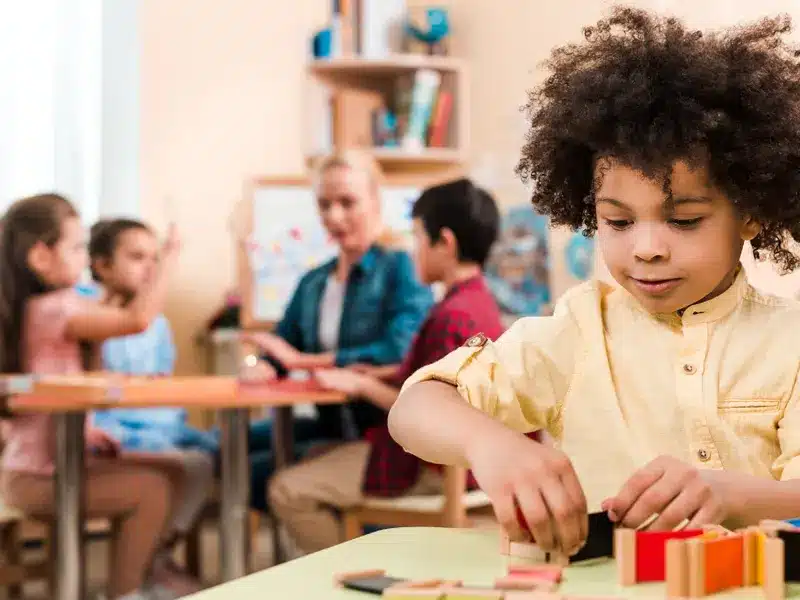
What is a Reggio Emilia classroom like?
Reggio Emilia classrooms are unique environments that promote learning through exploration and creativity:
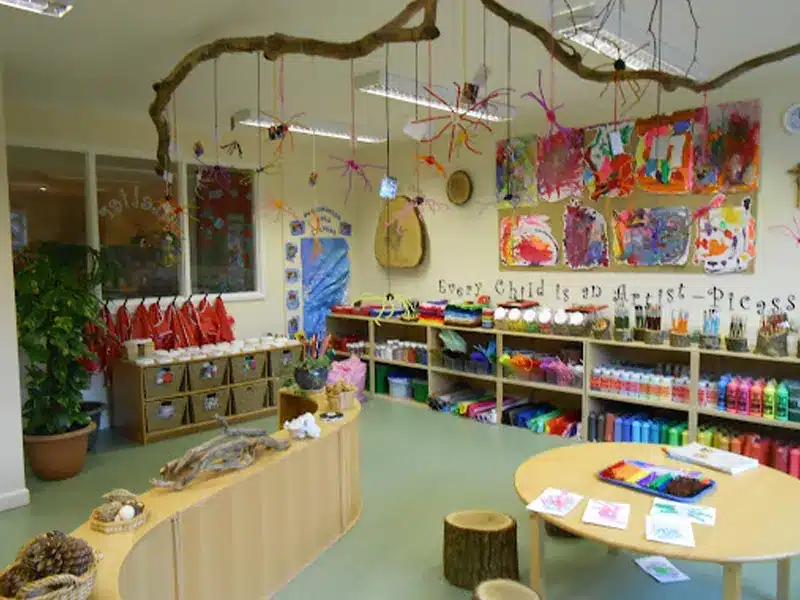
- Aesthetically Pleasing: Great emphasis is placed on creating a beautiful and inviting space that reflects the children’s learning and interests.
- Flexible Spaces: The layout is adaptable, changing to suit the ongoing projects and the children’s needs.
- Materials for Exploration: A wide range of materials are available for children to use in their projects, encouraging them to express themselves in multiple ‘languages.’
- Documentation: Children’s work is prominently displayed, both as a celebration of their efforts and as a reflection of their learning journey.
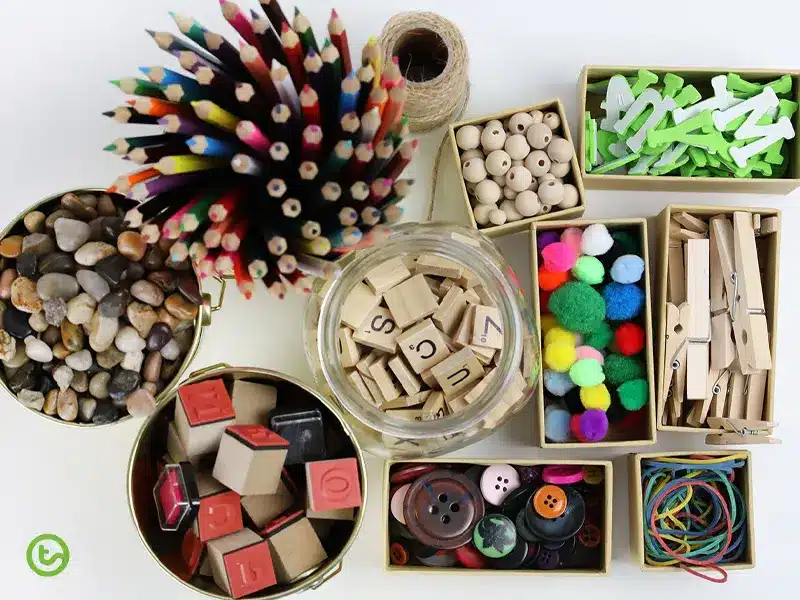
The difference between Reggio Emilia vs Montessori
At their hearts, Montessori and Reggio Emilia philosophies share a deep respect for the child’s ability to lead their learning journey. However, their paths diverge in the structure, role of the educator, and the emphasis on individual versus collaborative learning.
Curriculum
Montessori Curriculum:
The Montessori curriculum is highly structured, with a strong emphasis on independence, order, and following the child’s natural development. It spans practical life skills, sensory activities, language, mathematics, and cultural studies. Each area features specifically designed materials to support the child’s exploration and learning at their own pace.
Reggio Emilia Curriculum:
In contrast, Reggio Emilia does not follow a pre-defined curriculum but rather utilizes a fluid, project-based approach that emerges from the children’s interests. This approach views the child as a co-constructor of knowledge, with the teacher facilitating rather than directing learning. The curriculum is flexible, adapting to the needs and curiosities of the students, making every Reggio Emilia classroom uniquely tailored to its occupants.
Self-Directed Child Experience
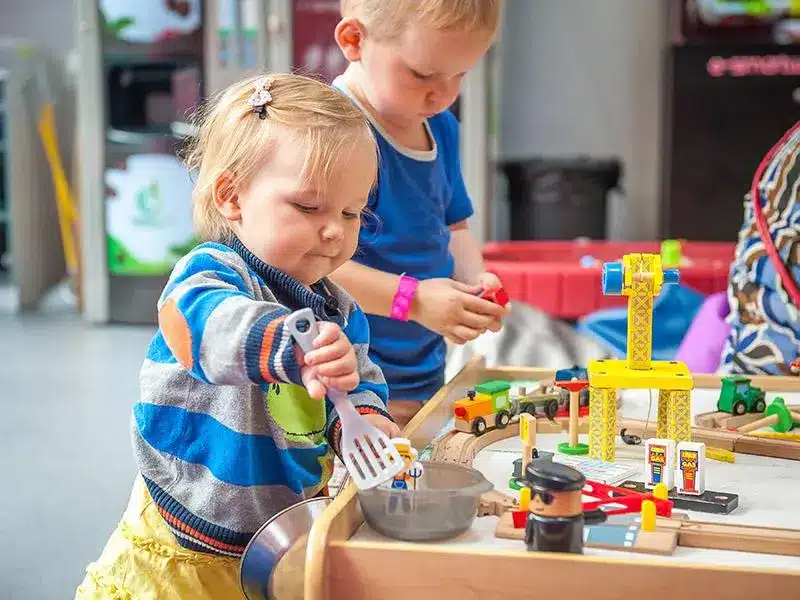
Montessori:
Self-direction in the Montessori philosophy is paramount. Children choose their activities from within a range of options prepared by the teacher. This self-directed work is believed to foster independence and self-discipline, with the teacher serving as a guide to facilitate the child’s learning and exploration.
Reggio Emilia:
While Reggio Emilia also values the child’s role in directing their learning, it places more emphasis on collaborative projects as a medium for exploration. Children are encouraged to work together, with projects often evolving from group interests. This collaboration is supported by adults but led by the curiosity and creativity of the children themselves.
Classroom Design
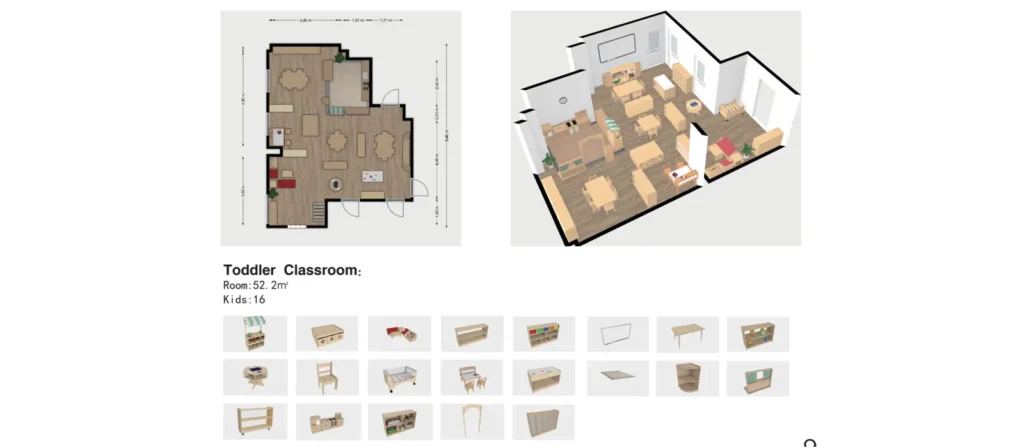
Montessori Classroom: A Montessori classroom is carefully designed to support independent learning and exploration. Everything within the environment is accessible to the child, from child-sized furniture to learning materials. The space is organized into distinct areas corresponding to different parts of the curriculum, each designed to be inviting and conducive to learning.
Reggio Emilia Classroom: The Reggio Emilia environment is seen as a “third teacher,” richly resourced with materials that encourage expression through the “hundred languages” children use to communicate. Classrooms are adaptive, reflecting the current interests and projects of the children. Natural light, open spaces, and access to the outdoors are prioritized to create a welcoming and stimulating environment.
Learning Tools
Montessori Tools: Montessori learning materials are carefully designed and specific to the curriculum, aiming to isolate difficulty so that the child can focus on a single concept at a time. These tools are hands-on, sensorial, and self-correcting, allowing children to explore concepts independently and learn from their mistakes without direct intervention from the teacher.
Reggio Emilia Tools: In Reggio Emilia, materials and tools are varied and often not prescriptive. They are selected based on the current projects and interests of the children. A wide range of media, including art supplies, natural materials, and recyclable resources, is made available, encouraging children to express themselves in diverse and creative ways.
By understanding these foundational differences, parents and educators can make more informed choices that reflect the values, learning styles, and individual needs of each child. Whether drawn to the structured, self-directed learning of Montessori or the collaborative, project-based approach of Reggio Emilia, both methods offer rich, developmental experiences that respect and nurture the potential of every child.
Key Similarities Between Montessori and Reggio Emilia
Though Montessori vs Reggio Emilia are often highlighted for their differences, they converge on several fundamental principles that shape their approach to early childhood education.
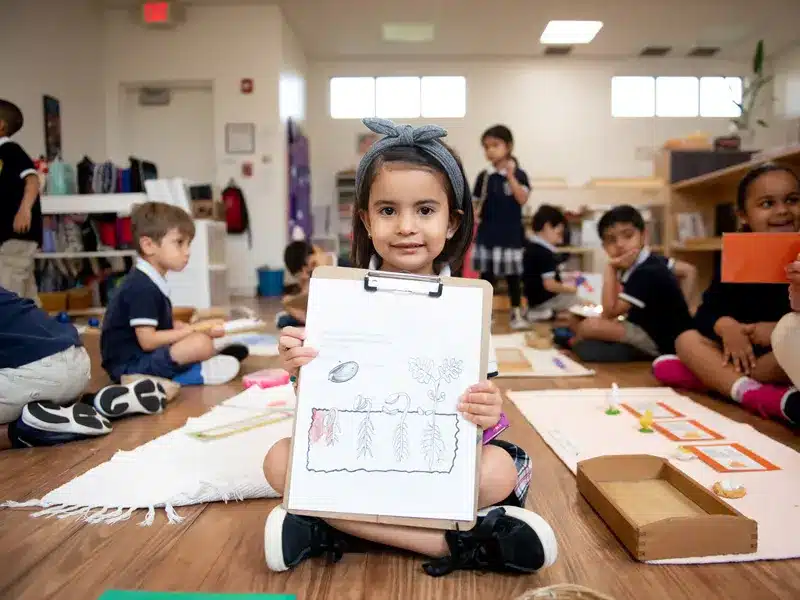
Flexible Learning
Both Montessori and Reggio Emilia value the flexibility in learning, recognizing that each child has their own pace and style of learning. This flexibility allows for a more personalized learning experience that caters to the individual needs of the child, encouraging them to explore their interests and develop at their own pace. In Montessori classrooms, this is evident through self-directed activities within a prepared environment. In Reggio Emilia, this flexibility manifests in the project-based approach that evolves from the children’s interests.
Individualized Curriculum
A cornerstone of both Montessori and Reggio Emilia is the emphasis on an individualized curriculum. Montessori achieves this through a wide range of didactic materials that cater to different developmental stages, allowing children to engage with concepts as they are ready. Similarly, Reggio Emilia’s curriculum is not predetermined but emerges from the interests of the children, ensuring that learning is always relevant and engaging. This approach respects the child’s curiosity and intelligence, providing a rich ground for deep, meaningful learning experiences.
Student Interaction
Interaction among students is another area where Montessori and Reggio Emilia share common ground. Both philosophies encourage collaboration and peer learning as essential components of the educational experience. Montessori classrooms often include mixed-age groups, promoting mentorship and social development among students. In Reggio Emilia, the project work inherently requires children to collaborate, discuss, and explore ideas together, fostering a strong sense of community and shared learning.
Role of the Teacher
The role of the teacher in both Montessori and Reggio Emilia diverges from traditional educational models. In Montessori, the teacher or guide observes the children, intervening minimally to support the child’s learning and exploration. The Reggio Emilia approach similarly views teachers as co-learners and collaborators, facilitating rather than directing the learning process. In both cases, teachers respect the children as capable individuals and provide the tools and support needed to scaffold their learning journeys.
| Reggio | Montessori Method | |
|---|---|---|
| Flexible Learning | Allows students the liberty to select and pace their studies. | Student independence and self-directed learning. |
| Individualized Curriculum | Adapts educational experiences to align with students’ passions and drives. | Meet the unique requirements and curiosity of each child. |
| Student Interaction | Promote teamwork and group projects among learners. | Encouragement of reciprocal teaching and joint educational activities. |
| Role of the Teacher | Serve as a mentor and connector for participation tasks. | Assist in guiding students on their educational path and provide advice as needed. |
Choose the right educational philosophy for your child
Children are unique, with distinct ways of exploring the world and assimilating knowledge. Some children might thrive in a structured, predictable environment that offers clear expectations and a steady progression of learning challenges, as found in traditional and Montessori settings. Others might flourish in a more fluid, inquiry-based environment like Reggio Emilia or Waldorf, where creativity and imagination are the driving forces behind learning activities.
The educational philosophy you choose should reflect the values you hold dear as a family. If independence, self-discipline, and a deep respect for learning are qualities you wish to foster, Montessori might be your ideal choice. If you prioritize creativity, collaboration, and critical thinking, you might find Reggio Emilia or Waldorf approaches more aligned with your family values. Traditional education, with its emphasis on structure and achievement, might appeal to families who value these attributes.
Think about what you hope your child will gain from their educational experience. Are you looking for a solid academic foundation, or do you prioritize emotional and social development? Do you want your child to develop a love for learning that will last a lifetime, or are you more focused on measurable achievements? Your long-term goals for your child should significantly influence your choice of educational philosophy.
Choosing the right educational philosophy for your child is a deeply personal decision that requires thoughtful consideration of many factors. By understanding your child’s needs, aligning with your family values, evaluating the learning environment, considering the role of teachers, and keeping your long-term goals in sight, you can make an informed decision that sets your child on a path to a fulfilling and successful educational journey.
Conclusion
Both Montessori and Reggio Emilia offer compelling, child-centered approaches to early childhood education, each with its unique strengths and emphasis. The choice between them depends on the specific needs, values, and educational goals of parents, educators, and institutions. Understanding the core differences between these approaches is the first step in making an informed decision that best supports the development of the children in your care.

